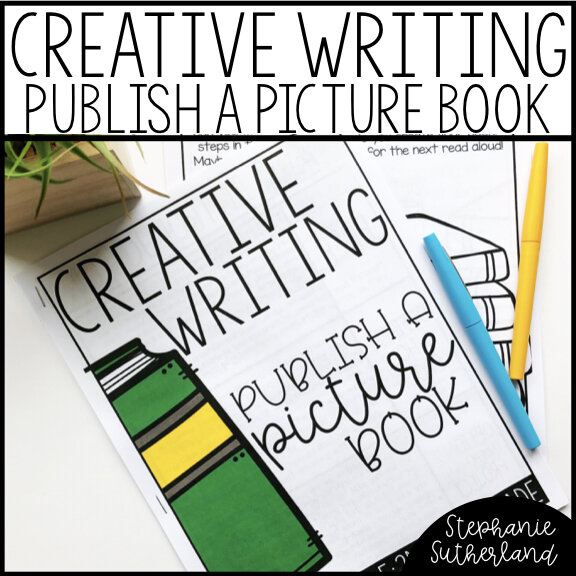Grow Your Students As Writers This Year
Think about how difficult it is for you to sit down and simply write something…anything. An email, a school paper, a thank you note…all require you to sit, collect your thoughts, organize your ideas, and map out what direction you want this thing to go before you even begin writing.
As an adult, most of the things we write in day-to-day life are fairly short, and we’re practiced enough at the structure of writing to be able to fluently sit down, think through the structure of what we’re going to write, and get going.
If you’re like me, you still will reread/delete/rewrite your sentences 5 million times in an email before you ever send it, and that self-editing and critical thinking about context is an important piece of the writing process, as well. How did you learn how to do these things?
Through very patient teachers.
It’s difficult to remember what it felt like to be non-fluent as a writer. You don’t know when you suddenly were able to do it well. Through the years, somehow frequent exposure to the writing process absorbed, and you were sent off into the world to construct college essays, resumes, cover letters, reference requests, etc. etc.
It’s hard to be an effective writing teacher when you can’t remember what it was like to be bad at the basics. You may not consider yourself a great writer. You may not write as a hobby. But you can likely do the basics, and my guess is you can do the basics better than your students.
Today, I want to share four tips with you to help grow your students as writers. I’m writing to primary elementary teachers, because we’re typically starting at ground zero with our writers, but upper and intermediate grades teachers will certainly find value in the ideas here!
Scaffold The Process Through Lots of Baby-Steps
When you assign a writing prompt or project to your kids, you can see the potential. You can feel the magic that they could create. But sometimes all they see is a big, blank piece of paper. All they can see is the 5-paragraph requirement. The best way to help your students approach a larger piece of writing is to break it into chunks, and explain the steps explicitly. If you want them to write a rough draft of a speech, a creative story, an expository essay, etc., label what should be in each paragraph on a graphic organizer. Or, put each section of the text on a different page for kiddos who really need to look at this in bite-size chunks.
Give Them A Little Control
One sure-fire way to grow your students as writers is to help them like it. One step in that direction is to give them a little choice or control in the direction that they take your assignment. This could be as easy as letting them choose the topic, or as complex as allowing them to alter the structure of the writing you want them to do (do they really need 5 paragraphs, or does 4 cover it?)
Making the kids feel like they are in control will engage them a bit more, and maybe help them enjoy the process, because they feel that they own it!
Host Better Conferences
Giving each student your individual attention on their writing every once in a while will DEFINITELY help them grow. But, you need to be intentional with this time. I fell into the trap several times as a teacher of feeling like there was SO much to fix in one student’s essay, that I should just take over and start writing over their writing. Did they learn from that? Nope.
I’ve started updating many of the writing projects in my store with conference pages that ask students to choose one thing to focus on during their conference. Helping them to grow will mean focusing on one thing at a time, and having meaningful conversations about why the quotation marks will go there, or why this word choice is more compelling than that one.
ALSO-Have students make the corrections with the pen as often as possible, even if you’re the guiding voice behind it. :)
Create a Routine for Peer Review
Peer review needs lots of structure to be effective, otherwise you may have a lot of non-constructive criticism being tossed around your room. My favorite peer review routine is:
1.) Have students grade another student’s essay using the same rubric you will be using (maybe a more kid-friendly version, or simplified, if necessary).
2.) Have them jot down some “stars and wishes” on the back of the rubric, a sticky note, or a separate sheet of paper. I do two stars, or things that the student loved about the writing, and one thing they wish they had included or done.
Provide Resources for Self-Correction
If we want students to improve, they need to take charge of fixing their mistakes themselves. So, making resources (dictionaries, word walls, thesauruses, etc.) accessible, and teaching them how to use them is key for helping students help themselves. I also have incorporated lots of dictionary.com and thesaurus.com for students who can be responsible with the technology!
Interesting Word List Booklet is FREE in my free resource library!
If you are looking for writing projects and units that can help strengthen student writing skills, my store has several! Standards-based, engaging, rigorous, and guaranteed to get your students writing more!


















